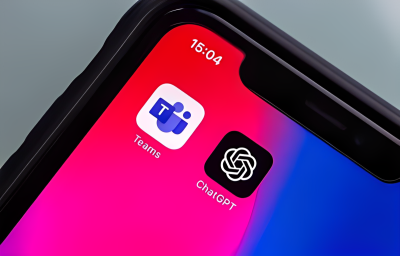Highlights:
- Microsoft recently announced the incorporation of the OpenAI DALL-E art generator AI-powered Bing Image Creator tool into Bing Chat.
- Microsoft also announced that it will shortly introduce multi-modal capabilities to its search, including the ability for users to upload images to chat and use them as part of the search.
With the global phenomenon of generative artificial intelligence overtaking the industry, Microsoft Corporation announced recently that it will be adding new features to its Bing Chat AI-powered search created to provide users with a more satisfying search experience.
Additionally, Bing’s AI search has been made available to a broader audience by transitioning from a limited preview to an open beta and eradicating the waitlist. Individuals can now access Bing Chat through the web and the Edge browser by connecting to their Microsoft accounts.
Bing Chat, released in February, is fueled by OpenAI LP’s GPT-4 large language model, enabling it to understand natural language inputs from users in multiple languages and respond conversationally. This makes it ideal for text queries and allows users to simply speak to the chatbot about what they seek, including web citations.
As part of the latest updates, Microsoft is expanding the chatbot’s responses beyond text to include images.
Yusuf Mehdi, Corporate Vice President, and consumer chief marketing officer at Microsoft, said, “We know from research that the human brain processes visual information about 60,000 times faster than text, making visual tools a critical way people search, create and gain understanding. Bing has always been known for its visual experiences, including features like Knowledge Cards and visual search.”
Users need to only pose a question that could activate a graphic or a chart, such as “Tell me about Mount Fuji,” the chatbot will provide information about the mountain located in Japan and an image to accompany it.
Microsoft recently announced the incorporation of the OpenAI DALL-E art generator AI-powered Bing Image Creator tool into Bing Chat. Using this tool, users can create images by asking the chatbot based on simple instructions such as “Paint me a picture of a dog playing cards” or “Show me a picture of a sunset over a cotton candy lake.”
With recent revisions, the image generator has been expanded to support all of the 100 languages supported by Bing, allowing users to generate images in their native language.
Microsoft also announced that it will shortly introduce multi-modal capabilities to its search, including the ability for users to upload images to chat and use them as part of the search. A feature introduced with GPT-4 enables the AI to extract context from pictures and search for relevant content to generate a text response.
A user could, for instance, upload or attach an image of a zebra and then inquire, “Tell me about this animal?” Bing Chat would then respond with information about zebras. The same could be done with other images, such as photographs of locations or objects, to extract context for the search engine to use when answering queries.
Productivity Enhancements to Bing Chat and Microsoft Edge
According to Microsoft, Bing Chat users will soon be able to save their conversations with AI. Previously, users were unable to save their conversations with the AI. This feature has been accessible for ChatGPT AI conversations since its inception.
Mehdi said, “Starting shortly, you’ll be able to pick up where you left off and return to previous chats in Bing chat with chat history. And when you want to dig into something deeper and open a Bing chat result, your chat will move to your Edge sidebar, so you can keep your chat on hand while you browse.”
Mehdi added that Microsoft is also investigating the possibility of enabling new discussions to build on the context of previous conversations. Soon, users can also export and share chat histories via social media or transition into other applications such as Microsoft Word.
Edge will soon have enhanced AI summarization capabilities for lengthy documents, such as PDFs and long websites, making it simpler for users to comprehend information.
Edge will also receive actions that convert user requests into browser-based automation in the coming weeks. For instance, if a user wants to watch a specific movie, they can type, “I want to watch the new Avengers movie,” and Microsoft Edge will discover and show options in the sidebar. It will begin playing the movie on the platform it’s available on – if the user has the streaming subscription. Other actions, such as “I want to change my cookie settings” or “I want to see my bookmarks,” will display the appropriate menu.
Currently, the AI-powered actions do little more than reduce the number of steps required for users to complete tasks, and the integration is still in its infancy, but it’s evident that Microsoft has more extensive plans.
Additionally, Edge mobile will receive updates enabling Bing Chat to comprehend the context of the page the user is viewing. Users can enter queries about the page and receive responses about the mobile tab’s content.














